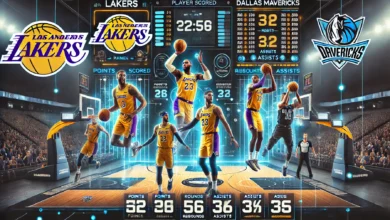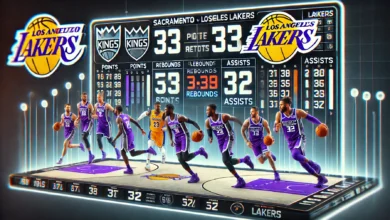The Ultimate Guide to the Dallas Marathon: Everything You Need to Know to Cross the Finish Line

Introduction
The Dallas Marathon is not just a race; it’s a celebration of endurance, community, and the indomitable human spirit. Established in 1971, this event has grown from a local gathering to one of the premier marathons in the United States. Each year, thousands of participants flock to Dallas to test their limits, cheer on loved ones, and support charitable causes.
Whether you’re a seasoned runner looking for a new challenge, a first-timer dreaming of crossing the finish line, or someone who just loves being part of an electrifying crowd, the Dallas Marathon offers something for everyone. In this guide, we’ll delve into the rich history of the marathon, provide practical tips for preparation, and highlight the race day experience so you can make the most of this iconic event.
The History and Legacy of the Dallas Marathon
The Dallas Marathon began its journey in 1971 as a small local race with just a few hundred participants. Back then, it was known as the White Rock Marathon, named after the picturesque White Rock Lake that formed part of the course. Over the decades, the event evolved, rebranding as the Dallas Marathon in 2012 to reflect its broader appeal and growing significance.
The marathon has always been about more than just running. It’s deeply intertwined with the Dallas community, raising millions for local charities, including its primary beneficiary, Texas Scottish Rite Hospital for Children. Each year, the marathon’s charitable contributions bring a sense of purpose to participants and volunteers alike.
The race has also seen its fair share of iconic moments. From record-breaking performances by elite runners to inspiring stories of everyday athletes overcoming personal challenges, the Dallas Marathon’s legacy is built on determination and triumph. It’s a symbol of resilience and an integral part of Dallas’ cultural fabric.
The Event Details and Logistics

2.1 Registration and Fees
Registering for the Dallas Marathon is straightforward, with options available on the official website. Early bird registrations offer significant savings, so it’s wise to sign up as soon as registration opens. Fees vary based on race categories and proximity to the event date, with late registrations typically costing more.
Cancellation and deferral policies are also available for those who might face unforeseen circumstances. However, terms and deadlines for these options are strict, so participants are encouraged to review them carefully before committing.
2.2 Race Categories
The Dallas Marathon offers an array of race categories to cater to all skill levels and interests. The full marathon and half marathon are the most popular, attracting elite and amateur runners alike. For those seeking a team experience, the relay races provide an opportunity to share the challenge with friends or family.
Shorter races like the 10K and 5K are perfect for beginners or those looking for a less intense experience. Families can join the fun runs, while adaptive divisions ensure inclusivity for participants with disabilities.
2.3 Key Dates and Locations
The marathon weekend is packed with activities. Bib pickups and the health and fitness expo kick off the festivities, giving participants a chance to collect their race kits and explore vendor booths. On race day, participants gather at the starting line in downtown Dallas, ready to embark on a journey that winds through iconic landmarks and vibrant neighborhoods.
2.4 Course Highlights
The Dallas Marathon’s course is a blend of scenic beauty and urban energy. Participants run past notable landmarks like the Margaret Hunt Hill Bridge, the Dallas Arts District, and the Katy Trail. The course’s gentle elevation changes and strategically placed hydration stations make it manageable yet challenging. Pacing yourself through the high-energy zones, where spectators cheer enthusiastically, can make all the difference.
Preparing for the Dallas Marathon
3.1 Training Plans and Schedules
Preparing for a marathon requires commitment and a well-structured training plan. Beginners should start training at least 16 weeks in advance, gradually building mileage and incorporating long runs. Intermediate and advanced runners might follow 12-week plans focused on improving speed and endurance.
Rest days and cross-training activities, like cycling or swimming, are crucial for preventing injuries and maintaining overall fitness. Hiring a coach or joining a running group can provide additional motivation and expert guidance.
3.2 Nutrition and Hydration Tips
Proper nutrition fuels your body for the grueling miles ahead. Leading up to race day, focus on a balanced diet rich in carbohydrates, lean proteins, and healthy fats. Carb-loading a few days before the marathon ensures you’ll have ample energy reserves.
During the race, hydration is key. Utilize the water and electrolyte stations along the course, and practice your race-day fueling strategy during training runs to avoid digestive issues. Post-race recovery meals should include protein for muscle repair and carbs to replenish glycogen stores.
3.3 Gear and Equipment
The right gear can make or break your marathon experience. Invest in running shoes suited to your foot type and gait, and break them in during training. Moisture-wicking clothing and accessories like water belts or GPS watches enhance comfort and performance.
3.4 Mental Preparation
A marathon is as much a mental challenge as it is a physical one. Overcoming self-doubt and staying focused during long runs is crucial. Visualization techniques, positive affirmations, and setting achievable goals help build mental resilience. On race day, trust your training and stay present in the moment to enjoy the experience fully.
Race Day Experience
4.1 Arriving at the Venue
Arriving early on race day ensures a stress-free start. Use public transportation or pre-book parking spots to avoid last-minute rushes. The bag check service allows you to store personal items securely while you focus on the race.
4.2 Race Etiquette and Rules
Understanding race etiquette ensures a smooth experience for everyone. Stay in your designated starting corral, signal when overtaking others, and thank volunteers along the course. Familiarize yourself with race course signals and abide by the organizers’ rules for a safe and enjoyable run.
4.3 Post-Race Celebrations
Crossing the finish line is a moment of triumph! Collect your medal, hydrate, and take advantage of the cool-down areas to prevent cramps or injuries. The post-race festivities, featuring food, live music, and community activities, create a celebratory atmosphere that’s hard to forget.
Conclusion
The Dallas Marathon is more than just a race; it’s a personal journey of growth and achievement. With its rich history, scenic course, and vibrant community spirit, it’s an event that leaves participants inspired and exhilarated. Whether you’re a first-time runner or a seasoned marathoner, the Dallas Marathon promises an unforgettable experience that celebrates your hard work, determination, and passion.
FAQs
- What is the date for the next Dallas Marathon? The event typically takes place in December. Check the official website for specific dates.
- What is the time limit for completing the marathon? Participants usually have a 6-hour time limit for the full marathon.
- Can I participate in the Dallas Marathon if I’m a beginner? Absolutely! The event caters to all skill levels, including beginners.
- Are there any age restrictions for participation? Yes, minimum age requirements vary by race category.
- What’s included in the registration fee? Registration typically includes a race bib, T-shirt, medal, and access to post-race festivities.
- How does the Dallas Marathon support charitable causes? Proceeds benefit local charities, with Texas Scottish Rite Hospital for Children being a primary beneficiary.
- Can I switch race categories after registering? Yes, but changes must be made before the deadline specified by organizers.
- Is there a virtual option for the Dallas Marathon? Some editions offer a virtual race option. Check the event details for availability.
You mau also read:https://workuptime.co.uk/clippers-vs-dallas-mavericks-match-player-stats/


